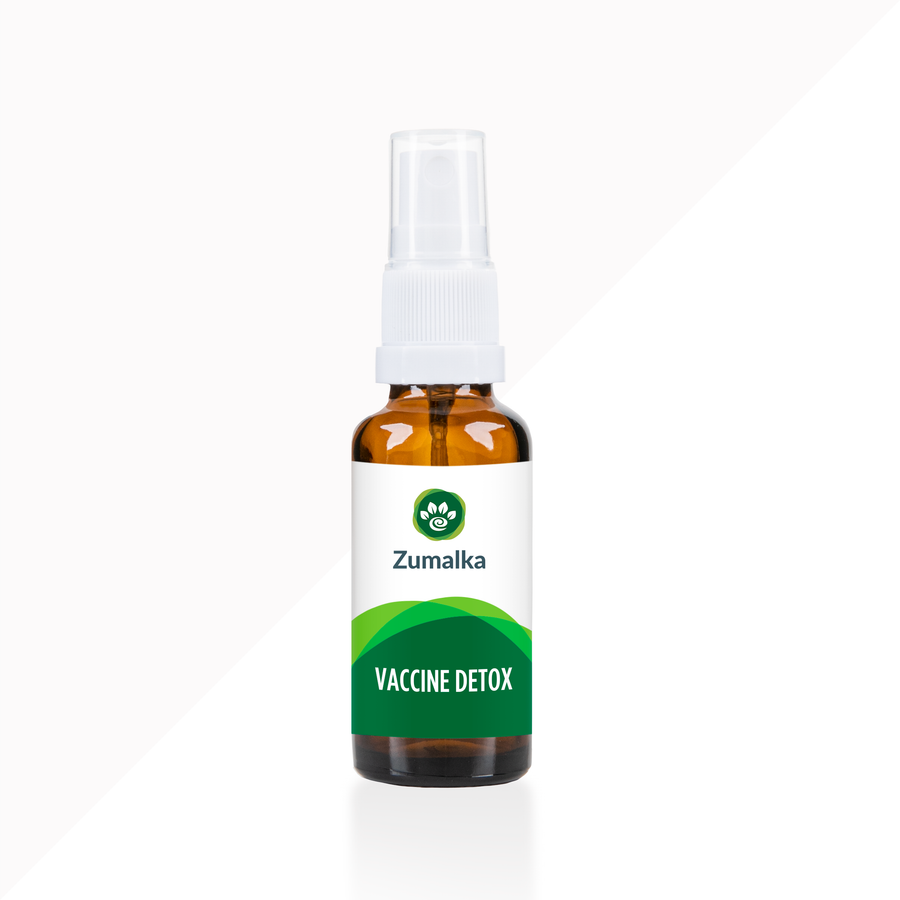Expert Insights: Is Pet Insurance Still Worth It? Vets and Owners Weigh In
We love our pets like family, but when sudden illness or injury strikes, the cost of care can be overwhelming. With 1 in 3 pets needing emergency treatment each year, unexpected vet bills are more common than you might think.
Many Americans would struggle to cover a $1,500 emergency vet bill, putting both their finances and their pet’s health at risk. That’s why more pet owners are asking: Is pet insurance worth the cost for peace of mind and protection?
Pet insurance can be worth it. If you choose the right coverage, it can offer valuable peace of mind during unexpected emergencies. This article will walk you through what you need to know to make an informed decision.
What Is Pet Insurance and How Does It Work?

Pet insurance works like health insurance for your pet, covering unexpected costs from accidents, illnesses, and emergencies. Most plans reimburse you after you pay the vet and submit a claim, though some now offer direct payment options to participating providers.
Every pet insurance policy includes a premium, the monthly or annual amount you pay for coverage, and a deductible, which is the amount you must pay out of pocket before reimbursement begins. Deductibles can be either annual or per-incident, depending on the plan.
Pet insurance also includes a reimbursement rate, the percentage of eligible vet costs the insurer pays back, typically 70% to 90%. Most plans have an annual coverage limit, but many now offer unlimited payouts for greater peace of mind.
Understanding Pet Insurance Plans: Types and Coverage Options
Accident-only pet insurance covers emergency care for unexpected injuries like broken bones or swallowed objects, but it doesn’t include illnesses or hereditary conditions. It’s typically more affordable than comprehensive plans, making it a budget-friendly option for basic protection.
The most common type of pet insurance, covering around 98% of plans, is accident and illness coverage. It includes both injuries and unexpected illnesses, such as chronic and hereditary conditions, but generally excludes preventive care and pre-existing issues.
For the most complete protection, some pet insurance plans offer a wellness add-on to accident and illness coverage. This enhanced option includes routine and preventive care, like checkups, vaccinations, dental cleanings, and spay/neuter, in addition to emergencies and illnesses.
What Pet Insurance Covers (and What It Doesn’t)
A wide range of medical diseases and treatments are covered by the majority of accident and illness pet insurance plans, assisting with both urgent care and continuing medical requirements. These include:
-
Accidental injuries: Covers emergencies like broken bones, swallowed objects, bite wounds, and other trauma.
-
Unexpected illnesses: Includes sudden conditions like skin allergies, gastrointestinal problems, and infections.
-
Chronic diseases: Helps manage long-term conditions such as diabetes, arthritis, and heart disease.
-
Dental illnesses: Often includes treatment for periodontal disease and other dental-related health problems.
-
Hereditary conditions: Covers breed-specific issues like hip dysplasia, hyperthyroidism, or patellar luxation.
-
Surgery: Pays for medically necessary procedures, including those for bloat, cataracts, or torn ligaments.
-
Cancer diagnosis and treatment: Includes diagnostic testing, chemotherapy, radiation, and cancer-related medications.
-
Prescription medications: Reimburses the cost of vet-prescribed drugs needed for covered conditions.
-
Diagnostic testing: Covers tools like X-rays, bloodwork, ultrasounds, and MRIs to identify medical issues.
-
Emergency exam fees: Reimburses the cost of emergency vet visits and urgent care exams.
What Pet Insurance Typically Doesn't Cover
Pet insurance provides useful protection, but the majority of policies have significant exclusions. By being aware of things beforehand, you can prevent surprises:
-
Pre-existing conditions: Conditions that showed symptoms or were diagnosed before your policy started are usually not covered. However, some curable conditions may be eligible after a symptom-free waiting period.
-
Routine and preventive care: Wellness exams, vaccinations, spay/neuter, and dental cleanings are typically excluded, unless you purchase a wellness add-on.
-
Pet supplies: Items like food, toys, and treats are not covered. Some plans may reimburse for vet-prescribed diets or supplements.
-
Cosmetic or elective procedures: Non-essential surgeries, such as tail docking or ear cropping, are usually excluded.
-
Boarding or daycare: Most policies do not cover pet-sitting, kennel stays, or daycare services.
-
Experimental treatments: Unproven or investigational procedures are generally not included in standard coverage.
Pet Insurance Costs Explained: What You’ll Really Pay
On average, pet insurance costs around $56.30 per month for dogs and $31.94 for cats, according to 2023 data from the North American Pet Health Insurance Association (NAPHIA).
Estimates for 2024 vary slightly, with some sources reporting monthly premiums ranging from $46 to $62 for dogs and $23 to $32 for cats. Accident-only plans are more affordable, averaging about $17.01 for dogs and $9.68 for cats per month.
Below you will find the key factors that influence pet insurance cost:
-
Location: Because the cost of veterinary treatment varies by location, premiums are usually higher in states with greater living expenses or in urban regions.
-
Pet’s age: Insurance costs increase as pets get older, due to the higher risk of illness and chronic conditions. For example, premiums for senior pets can be significantly higher than for younger ones.
-
Pet’s breed: Certain breeds are more likely to have chronic or inherited health problems, which can increase insurance costs.
-
Policy customization: Your monthly premium is directly impacted by the deductible, reimbursement rate, and yearly coverage limit you select. Higher limits and smaller deductibles usually result in higher premiums.
-
Available discounts: Many insurers offer savings for enrolling multiple pets, active military service, or bundling with other policies.
Why Unexpected Vet Bills Can Break the Bank—and How to Prepare

Unexpected vet bills can be financially overwhelming, especially when emergencies happen without warning. With 1 in 3 pets needing emergency care each year, the risk and the cost are higher than many pet owners realize.
How much do typical vet treatments cost?
Emergency treatments for pets can be costly. Ligament repair alone can range from $3,000 to over $7,000. Without insurance or savings, these unexpected expenses can place a significant financial burden on pet owners.
Common pet emergencies like feline urinary obstructions can cost up to $3,000, while surgery to remove a swallowed object often exceeds $3,500, with averages reaching $5,106 for dogs and $4,636 for cats. These high costs highlight why unexpected veterinary care can be a major financial challenge for pet owners.
Treating serious illnesses can be especially expensive. Parvo treatment in puppies ranges from $1,000 to over $8,000, depending on the hospital. Cancer care can run into the tens of thousands, with one case totaling $62,500, though nearly $40,000 was reimbursed through pet insurance.
The average cost of unexpected vet care typically falls between $800 and $1,500 or more, depending on the situation. For many pet owners, these surprise expenses can strain budgets and highlight the importance of financial preparedness.
Why pet medical costs don’t stop at the first visit
Veterinary costs can quickly add up when diagnostic tests, follow-up visits, and ongoing treatments are needed after the initial emergency. When care is delayed or incomplete due to cost, short-term issues can become long-term health problems, leading to even higher expenses over time.
Many Americans are financially unprepared for pet emergencies. 6 in 10 have less than $1,000 in savings, and most struggle to afford a $1,500 vet bill. Only 19% of surveyed pet owners could cover a $5,000 emergency out-of-pocket, highlighting the financial vulnerability many face when unexpected care is needed.
Common Health Risks by Pet Breed (and What They Could Cost)
Certain pet breeds are more prone to specific genetic health conditions, often resulting in higher medical costs throughout their lives. These breed-related risks, like hip dysplasia in large dogs or breathing issues in flat-faced breeds, can greatly influence your vet bills and insurance options.
Breed-specific conditions can come with steep costs. Pugs, for example, are nearly seven times more likely to develop hip dysplasia than Poodles, with treatment ranging from $1,700 to $5,000. French Bulldogs are prone to hemivertebrae, a spinal deformity that may require surgery costing thousands of dollars.
Large dog breeds are more susceptible to chronic conditions like arthritis and heart disease, often requiring long-term treatment and medication. Understanding breed-specific health risks is essential for effective budgeting and selecting the right pet insurance coverage.
Top Benefits of Having Pet Insurance
The fact that pet insurance covers 70% to 100% of approved veterinary costs is one of its greatest benefits. It lessens the financial strain of unplanned care. This can help pet owners feel more at ease during emergencies and make expensive treatments more accessible.
Pet insurance makes it easier to approve critical procedures, giving you the peace of mind to prioritize your pet’s health without stressing over the cost. Most plans also offer flexibility, allowing you to choose any licensed veterinary clinic for your pet’s care.
Additionally, insurance for pets is designed to cover major and often costly emergencies and illnesses, helping protect you from unexpected financial strain. Most policies are highly customizable, allowing you to choose the deductible, reimbursement rate, and coverage limits that best fit your budget and your pet’s needs.
Many pet insurance plans also offer added benefits such as 24/7 telehealth access, alternative therapies like acupuncture or chiropractic care, and behavioral therapy for issues like anxiety or aggression. These extras can enhance your pet’s overall well-being while providing even greater value from your coverage.
Drawbacks of Pet Insurance: What to Consider Before You Buy
One key drawback of pet insurance is that it typically operates on a reimbursement model, meaning you must pay the full vet bill upfront and wait to be reimbursed. This can be challenging for pet owners without immediate access to emergency funds.
Pet insurance typically doesn’t cover pre-existing conditions, which means any illness or injury diagnosed before enrollment won’t be eligible for reimbursement. Routine and preventive care, like checkups, vaccines, and dental cleanings, are also excluded unless you purchase a separate wellness add-on.
Pet insurance premiums typically rise as your pet ages, reflecting the increased risk of illness and chronic conditions. For pets with multiple pre-existing conditions, coverage may be limited, making the cost of insurance less justifiable for some owners.
There’s a risk of wasting money on pet insurance if the plan doesn’t align with your pet’s specific health risks or coverage needs. Additionally, most policies include waiting periods before coverage begins, which can delay reimbursement for certain conditions or treatments.
The Natural Way to Keep Your Pet Healthy: A Premium Option Worth Considering
Zumalka’s GENERAL DETOXIFICATION KIT helps cleanse vital organs, particularly the liver and kidneys, to support your pet’s immune system and overall well-being. Regular detoxification, especially for pets aged three and up, can help remove accumulated toxins and promote long-term health.
The GENERAL DETOXIFICATION KIT includes KIDNEY DRAINER, LIVER DRAINER, LYMPH DRAINER, ENVIRONMENTAL DETOX, and PROBIOPET, a powerful combination designed to help detox the body and promote healthy organ function. These natural ingredients work in harmony to support your pet’s immune health and promote overall well-being.
No Pet Insurance? Here Are Smart Alternatives to Manage Vet Bills
If you choose not to use pet insurance, there are alternative ways to manage unexpected vet costs. Options include setting aside emergency savings or borrowing from friends and family to help cover care when it’s needed most.
Pet owners can also explore crowdfunding platforms like Waggle or seek charitable grants and financial assistance from animal welfare organizations. These resources can provide crucial support when unexpected veterinary expenses arise and personal funds fall short.
Veterinary financing options, such as CareCredit or personal loans, can help pet owners manage large vet bills over time. Many clinics also offer payment plans, making it easier to access care without paying the full cost upfront.
Pet Insurance: Is It Worth It? Our Final Verdict

Pet insurance is a smart investment for many pet owners, particularly when it provides the appropriate coverage for their pet's unique requirements. It offers peace of mind and financial stability, especially for people who might find it difficult to pay for an unforeseen, expensive veterinary charge.
The best time to buy pet insurance is while your pet is still young and healthy, helping you avoid pre-existing condition exclusions and lock in lower premiums. Beyond financial protection, the peace of mind it offers is one of its greatest long-term benefits for pet owners.
Pet insurance may be less beneficial if you can comfortably cover large vet bills out of pocket or if your pet is older with multiple pre-existing conditions. In these cases, the cost of premiums may outweigh the potential coverage value.
In the end, whether pet insurance is worth it depends on your circumstances, your budget, your pet’s health, and your tolerance for unexpected costs. Evaluating these factors carefully will help you choose the best option for your pet’s long-term care.
How to Find the Right Pet Insurance Plan
To choose the right pet insurance plan, start by assessing your pet’s unique health risks, especially any breed-specific conditions they may be prone to. This helps ensure you select a policy that provides the most appropriate and valuable coverage for your pet’s needs.
Start by establishing a reasonable spending plan for both your monthly premiums and any possible out-of-pocket expenses, such as co-pays and deductibles. Next, evaluate policies from many pet insurance companies side by side to determine which offers the best value in terms of both coverage and cost.
Carefully read the fine print to understand key details like exclusions, waiting periods, and how deductibles and reimbursement rates are applied. Then, customize your policy, adjusting the deductible, reimbursement rate, and annual limit to match your pet’s needs and your budget.
Tools like Pawlicy Advisor make it easier to compare pet insurance plans by offering personalized recommendations based on your pet’s age, breed, and health profile. It also highlights breed-specific risks to help you choose the most suitable coverage with confidence.
Key Notes to Remember
Roughly 1 in 3 pets will require emergency veterinary care each year, making unexpected medical expenses a common reality for pet owners. This highlights the need for a solid financial plan, whether through pet insurance or other forms of coverage, to protect both your pet and your peace of mind.
Unexpected vet engagements can be less expensive when pet insurance covers 70% to 100% of eligible emergency expenses. Pet owners may focus on their pet's care rather than the costs thanks to this coverage, which offers a priceless piece of mind.
Pre-existing conditions are not typically covered by pet insurance plans, which is why early enrollment is frequently advised. Finding the best plan for your pet's requirements and your budget may be made simpler and more informed with the use of comparison tools like Pawlicy Advisor.
The Bottom Line
For many pet owners, pet insurance offers meaningful financial protection and peace of mind, ensuring their pets can receive essential care without hesitation. Reducing the stress of unexpected veterinary costs helps you focus on what truly matters—your pet’s health and well-being.
Choosing pet insurance is a personal decision, so it’s important to evaluate your pet’s health, your financial situation, and your comfort with unexpected costs. Take time to research and compare plans to find the coverage that fits both your needs and your peace of mind.
FAQs
Is there any point in pet insurance?
Yes, pet insurance can be worth it. It helps cover unexpected vet costs, offers financial peace of mind, and ensures your pet receives essential care without putting strain on your budget.
Why do dogs need pet insurance?
Dogs need pet insurance to help cover unexpected veterinary expenses from accidents or illnesses. It offers financial protection, ensures timely care, and supports your dog’s long-term health, especially as they age or face breed-specific risks.
Is it worth changing pet insurance?
Changing pet insurance can be worth it if another provider offers better coverage, lower premiums, or added benefits. Just be sure to compare exclusions, waiting periods, and coverage for pre-existing conditions first.
Should you have pet insurance for a cat?
Yes, pet insurance for a cat can be a smart investment. It helps cover unexpected illnesses or accidents, reduces out-of-pocket costs, and provides peace of mind, especially as your cat ages or develops chronic conditions.
What happens if you don't have pet insurance?
Without pet insurance, you’ll pay the full cost of vet care yourself, which can be financially overwhelming during emergencies, potentially leading to delayed treatment and difficult decisions about your pet’s health and well-being.
When should you get pet insurance?
The best time to get pet insurance is when your pet is young and healthy. Early enrollment helps you avoid pre-existing condition exclusions and lock in lower premiums for long-term financial protection and peace of mind.
Do indoor cats need insurance?
Yes, indoor cats can still benefit from pet insurance. They’re at risk for illnesses, dental issues, and unexpected emergencies. Insurance helps manage vet costs and ensures your cat receives the care they need without financial stress.
Is it worth insuring a cat?
Yes, insuring a cat is often worth it. Pet insurance helps cover unexpected vet bills from accidents or illnesses, providing financial protection and peace of mind throughout your cat’s life, especially as they age.
What happens if I cancel my pet insurance?
If you cancel your pet insurance, your coverage ends immediately or at the end of the billing cycle. You’ll be responsible for all future vet costs, and previously covered conditions may become uninsurable.
Can I cancel my many pet insurance policies?
Yes, you can cancel your pet insurance whenever you choose, usually by contacting your policy provider. However, coverage ceases when it is terminated, and if you later re-enroll, any ailments that were previously covered can be deemed pre-existing.
Can I get pet insurance if my cat is already sick?
You can get pet insurance if your cat is already sick, but pre-existing conditions won’t be covered. Coverage will apply only to future illnesses or injuries that occur after the policy starts.
What is the best type of pet insurance?
The best type of pet insurance is accident and illness coverage, as it offers the most comprehensive protection. Look for customizable plans with high reimbursement rates, flexible deductibles, and coverage for chronic and hereditary conditions.
Does pet insurance cover death?
Some pet insurance plans offer limited coverage for death, including euthanasia, cremation, or burial costs, but it varies by provider. Always review your policy details to understand what's included under end-of-life care coverage.
Can you cancel lifetime pet insurance?
Yes, you can cancel lifetime pet insurance at any time, but coverage will end, and previously covered conditions may become excluded if you reapply. Always review cancellation terms and long-term impacts before deciding.
Does every dog need insurance?
Not every dog needs insurance, but it can be highly beneficial. Pet insurance helps cover unexpected vet bills, offers peace of mind, and is especially valuable for breeds prone to health issues or active lifestyles.
What does a pet plan cover?
A pet insurance plan typically covers accidents, illnesses, surgeries, diagnostic tests, medications, and sometimes chronic or hereditary conditions. Some plans also offer optional wellness add-ons for preventive care like vaccines and annual checkups.
Does pet insurance cover vaccines?
Pet insurance typically does not cover vaccines under standard accident and illness plans. However, many providers offer optional wellness or preventive care add-ons that include coverage for vaccines, annual exams, and routine checkups.








Thanks for this informative post!
https://www.valuemarketresearch.com/report/pet-insurance-market
One big issue with just about all of these policies is that you will find a clause written into the policy that states that you will keep your pet up to date on all vaccines recommended by your vet in order to keep your end of the deal. And if you don’t do that, they won’t pay out your claim. Iny opinion, most vets are recommending way too many vaccines that are undermining our pets’ health and I refuse to have my cats injected with that stuff as a condition of having my claim honored after paying high premiums. Even if your claim is for something completely unrelated, such as an accident, they’ll use that as an excuse to not pay you. So no to health insurance.
Leave a comment